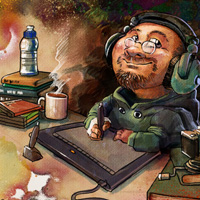- photo contests ▼
- photoshop contests ▼
- Tutorials ▼
- Social ▼Contact options
- Stats ▼Results and stats
- More ▼
- Help ▼Help and rules
- Login
A talk with the Art Director of Assassin’s Creed 3: The Chinh Ngo

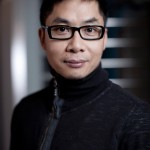
Assassin’s Creed is one of the blockbusters of the gaming industry made by Ubisoft, last November (2012) part 5 of this highly rated series was released. We had the chance to ask The Chinh Ngo, the art director of this game, some questions about how a game of this magnitude is made, focussing on the graphic side of the job. Assassin’s Creed III is a so called sandbox game which allows the player to follow his own path through the game, the story of this part is set in a historical setting: the American revolution in the 18th century. Historical figures like George Washington and Charles Lee come by and on the way teach the player some aspects of history, all mixed in a fictious story around a native American called Ratonhnhaké:ton (a.k.a. Connor) fulfilling his destiny fighting to achive freedom for his tribe. The Chinh Ngo works for Ubisoft Montreal and is art director of the game Assassins Creed III; he is responsible for the graphic part of this game. We, from THE EYE, had a talk with him about Assassins Creed III and the work involved in the creation of a game of this scale.
Assassin’s Creed III official game trailer:
Pxleyes: I would assume you begin with preliminary sketches for ideas, how are these created? Do you begin with hand drawn art or do you start with digital work and progress towards the final look in the CG environment?
 The Chinh Ngo:
The Chinh Ngo:
“As I work with a big team of artists, understanding historical references is key for Assassin’s Creed. As preliminary ideas, it really depends for each artist. Most of them start in digital work, from a plain page, pictures or even in a quick boxy 3D environment.
It doesn’t matter how they start, only the end result counts. This allows us to discover new avenues and ideas in which we grow during the process.”

Pxleyes: Was there any artwork that was influential in the development or perhaps a movie that may have triggered your creation of this environment or did you find this an untapped resource worth experiencing?
 The Chinh Ngo:
The Chinh Ngo:
“I was inspired by the chiaroscuro style of painting. They are filled with contrasts, saturate colors, light and dark. Very early on in the production I knew I wanted to bring these visual contrasts, these colors, into the art direction for all the night shots. That may differ a bit from the end result but that’s a part of the challenge for the art direction.”
Pxleyes: Obviously it takes more than one artist to create such a huge number of backgrounds and characters. How do you establish the look for a character or scene that works in harmony with the others?
 The Chinh Ngo:
The Chinh Ngo:
“We had regular meeting to be certain that people gathered together to look at each other’s work. We then comment, raise the differences during our discussions and each and every one go back with their different tasks. It was really important for us to have these meetings for the artists to show their work.”

Pxleyes: Connor is such a big change from Ezio Auditore (the main character of the previous 3 Assassin’s Creed parts), isn’t it a big risk to make such a character change in a series of games or is the original thought behind Assassin’s Creed strong enough to overcome this gap?
 The Chinh Ngo:
The Chinh Ngo:
“In the beginning we had very specific guidelines about the Assassin’s style (smooth outline, the white and red color and the hood). I knew from that, we needed to make a big change from Ezio to be able to achieve a new strong Assassin persona with Connor. So we started by keeping the Assassin’s style, but adding Native American touches. We wanted to keep the white, because it’s at the basis of the Assassin’s style, and also because the white, which is actually off-white, contrasts very interestingly with the green and the trees of the forest and the winter snow. At some point we were changing the red accents to other colors. Eventually we chose blue accents because it differentiates Connor from Ezio, and it’s a natural, fresh color. It is organic and reminds you of the wilderness; the sky, water, and the cold of winter.
Another thing about Connor’s style that differentiates him from previous assassins is the rigidity of the clothes he wears. Because of the setting, the cold makes the cloth very stiff. It also reminds you of the military presence in the game. It’s very structured, heavy. Ezio’s clothes were more ruffled so it’s a nice contrast. But although Connor’s look is structured, the Native influence prevents it from being stiff and gives it movement and dynamics.
Also, when you look at the silhouettes of Altair and Ezio, they are in clear flowing lines. Connor’s silhouette has these lines, but we broke them with the bow and by, for instance, adding feathers. It really shows his action-oriented nature.”
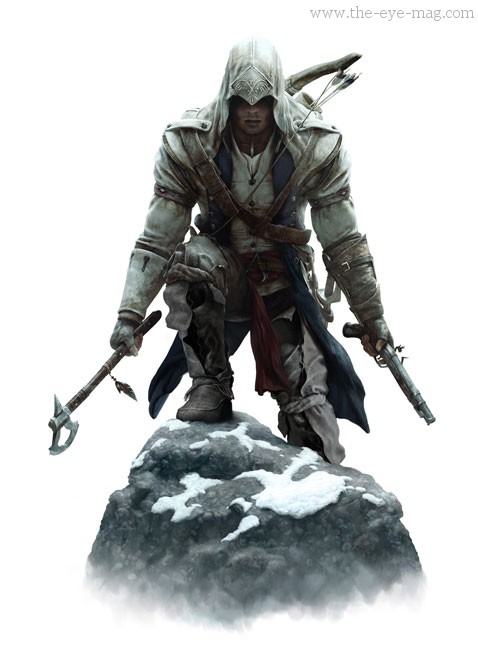
Pxleyes: Can you tell us how a character development is done? What makes the development group decide to go for a certain character?
 The Chinh Ngo:
The Chinh Ngo:
“It’s a continuous output and exchange between script writers, movie director, the art director and the concept artist. It sometimes comes from references if we have a particular facial structure in mind or simply by a concept. It doesn’t matter who came up with the first idea; the key element here is the collaboration between all the people that are involved.”
Pxleyes: Once you have the main sketches of the main characters, what is the process from that point until it is a playable character in the game?
 The Chinh Ngo:
The Chinh Ngo:
“Regarding Connor, Haytham and Lee it was a continuous effort of bringing the characters in the engine with the correct FOV, lighting and displacement maps to the take snapshots for paint overs and vice versa. We had many artists working on them and even had animators pose them in order to get a real look and feel of the characters.”

Pxleyes: The art of the game seems more illustration oriented than an attempt at a basic photo real look, do you find this important for a more enjoyable gaming experience?
 The Chinh Ngo:
The Chinh Ngo:
“For me, it is more of an artistic and editorial choice. On the technical size it could be possible to achieve a photo look for the environment; for characters and animations, that’s another story. I think it’s very important to have a certain unity between the 3 elements.
Immersion is one of the main goals for a good gaming experience, since our game is based on historical era and events. So you want to have certain realism and in the same time, allows artist to go further in their art skill and desires. The balance between the two will give a deeper result.”
Pxleyes: Costume is very important for character identity, how do you create such unique clothing that is still somewhat familiar to us?
 The Chinh Ngo:
The Chinh Ngo:
“We did lots of researches and had a lot of exchanges with our internal historian; we bought replicas of military costumes for that era and worked from there. We focus on the costume’s scales, the thickness of the fabrics, details on how they fold and their color scheme.”

Pxleyes: The weapons are so cool, how do you find the right look for a particular weapon and are they important to the overall make up of the character who wields them?
 The Chinh Ngo:
The Chinh Ngo:
“It’s all part of the creation process, we had many references, develop some from scratch but weapons bring out some imagery in our mind that is often cooler than what they actually were in real life. Also, Connor’s bow was an obvious must; it would have been inconceivable to have a Native American without it. The bow was what grounded our character with his origins; it was almost part of his body.”
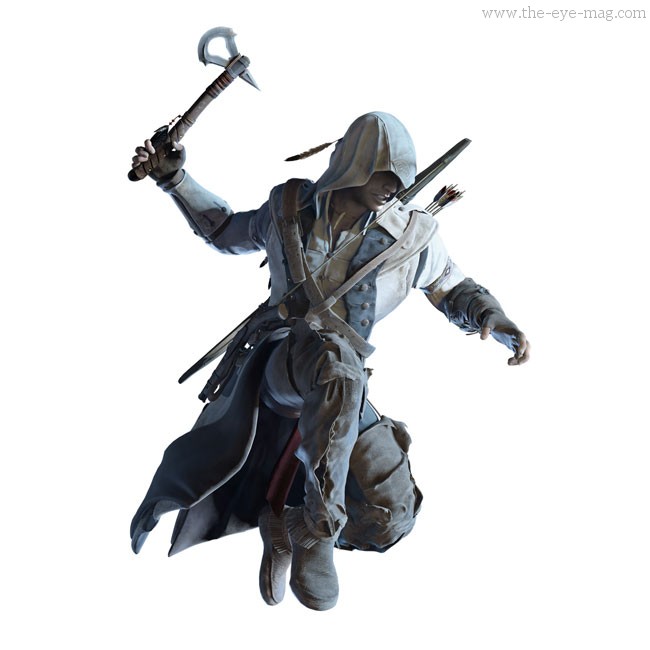
Pxleyes: Is there some personal freedom a graphic designer has in designing a game on this level, can you put something of yourself in it?
 The Chinh Ngo:
The Chinh Ngo:
“Yes, even if we give guidelines to the artists they still have a lot of freedom to explore their desires and visions. As we said earlier, artists were presenting their work to each other and commenting on it. It allowed for them to grow together in defining the environment they were creating. Also, with the amount of different cultural background, it gave us plenty of sources to feed ourselves from.”
Pxleyes: Many of our readers are familiar with software like Photoshop, what software do you use to create a game like Assassin’s Creed 3?
 The Chinh Ngo:
The Chinh Ngo:
“As it is a 3D game, we use 3D Max as a base but the textures are worked on in both ZBrush and Photoshop. The lighting and the visual effects are made with the in-house game engine (AnvilNext).”

Pxleyes: Assassin’s Creed 3 is the 5th part of the Assassin’s Creed series (the number 3 stands for the 3rd main character in this series), this means all the previous parts do bring in a legacy you’ll have to work with. How does this effect the development process?
 The Chinh Ngo:
The Chinh Ngo:
“Part of my work is to understand what has been done in the previous AC and comprehend what makes it an Assassin. From there it is imperative that I clean it up and starts with a fresh base while still keeping the brand’s foundation.”
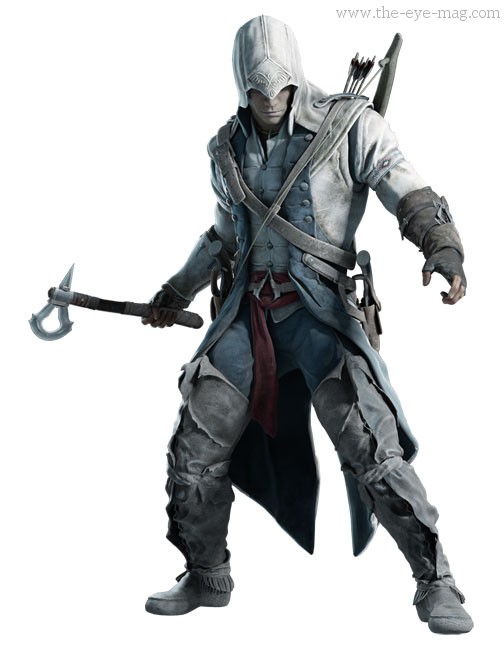
Pxleyes: On a personal level: how did you get involved in the gaming industry and especially Assassin’s Creed?
 The Chinh Ngo:
The Chinh Ngo:
“I started in architecture, as an architect 18 years ago and after a couple of years, I felt frustrated by the lack of creativity. That’s when I came to Ubisoft to work on amazing projects that allowed me to go from Playmobil to Splinter Cell and then onto Assassin’s Creed III.”
Pxleyes: Any hints and tips for those who do want to work in the gaming industry?
 The Chinh Ngo:
The Chinh Ngo:
“The work of the artists in the industry is more and more specialized and it is important for the person who is seeking a career in this domain to really understand all the aspects of a production but also to specialize himself in a specific field. This also means that you need to concede certain aspects for others. Don’t be clever for the sake of being clever.”
Pxleyes: Gamers have many different ages. Do you find the artistic appeal of the game is universal, regardless of age or is it geared to a specific demographic?
 The Chinh Ngo:
The Chinh Ngo:
“In the case of Assassin’s Creed, it is an action adventure game that occurs in an historical era of our world. In my opinion, this is appealing to anyone that has a certain passion for the past, for anyone that appreciates it to have a better view and understanding of where we are and where we are going in life. It is somewhat universal.”
 This interview was created for pxleyes’ magazine: THE EYE 10.
Interview done by: SpaceRanger & Robvdn
This interview was created for pxleyes’ magazine: THE EYE 10.
Interview done by: SpaceRanger & Robvdn
Howdie stranger!
If you want to participate in our photoshop and photography contests, just:
LOGIN HERE or REGISTER FOR FREE
Comments Off on A talk with the Art Director of Assassin’s Creed 3: The Chinh Ngo



